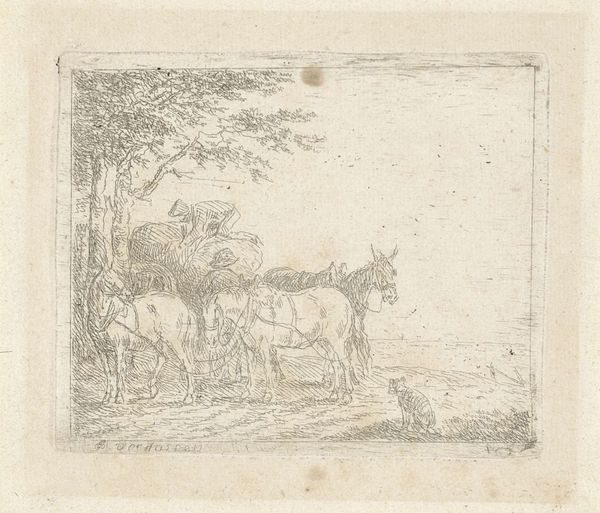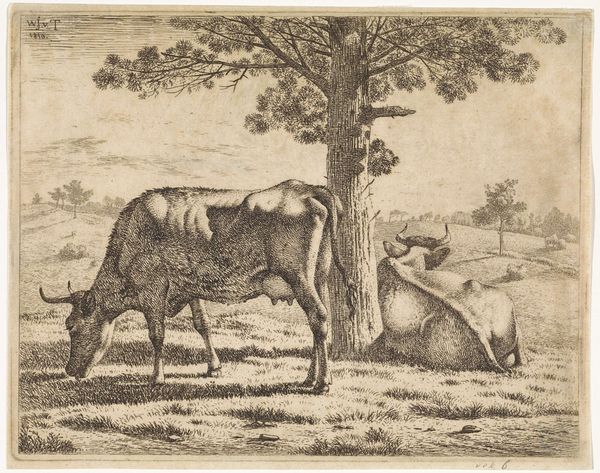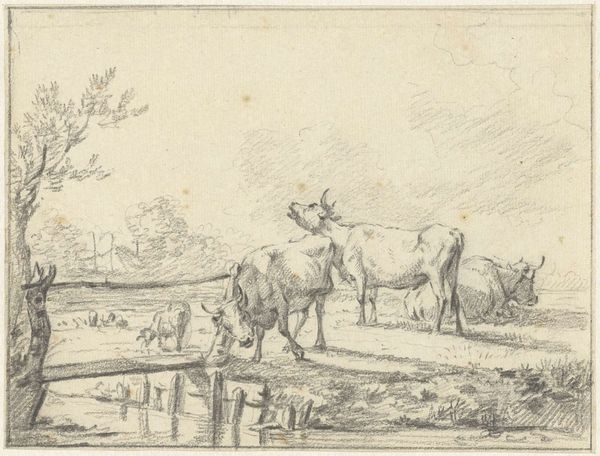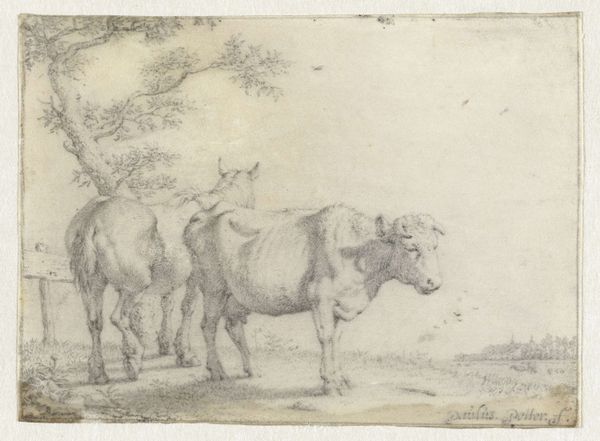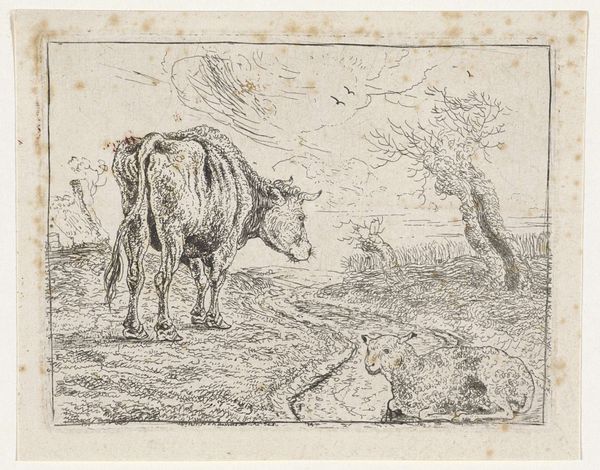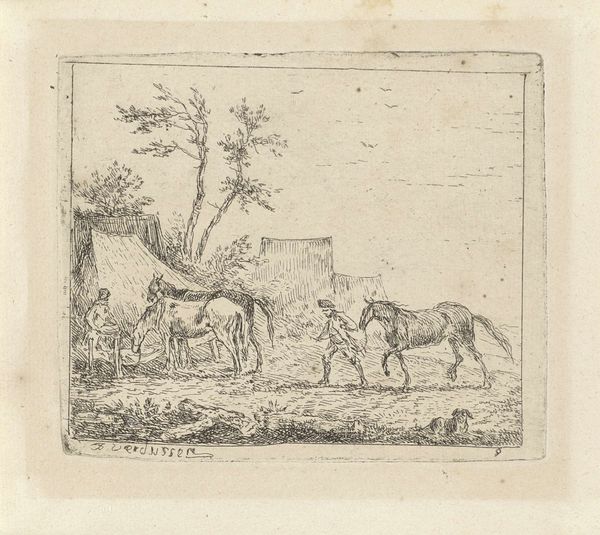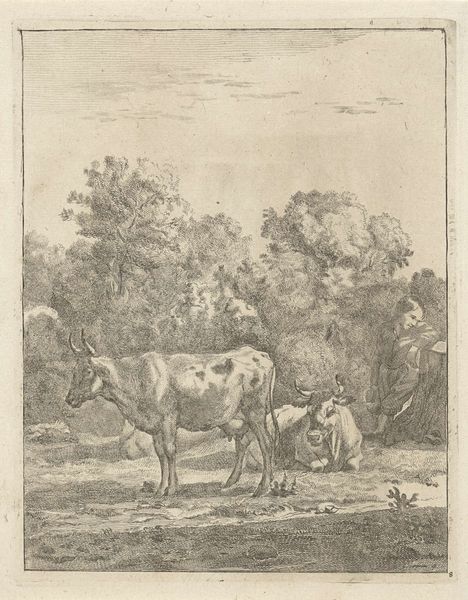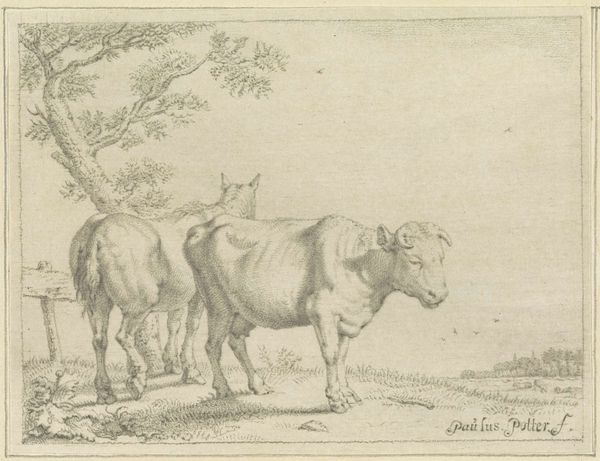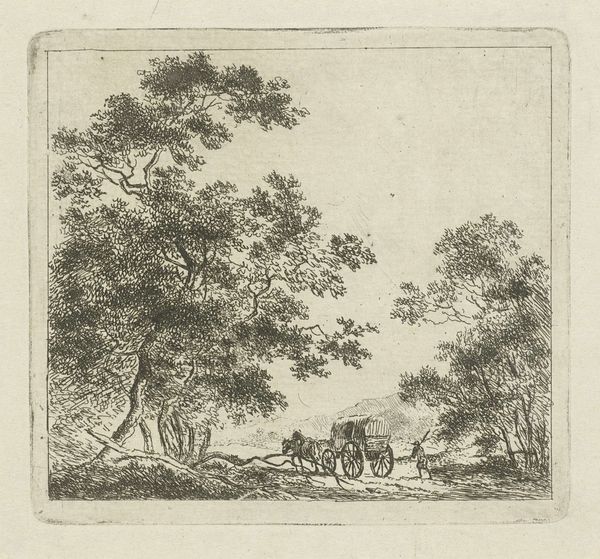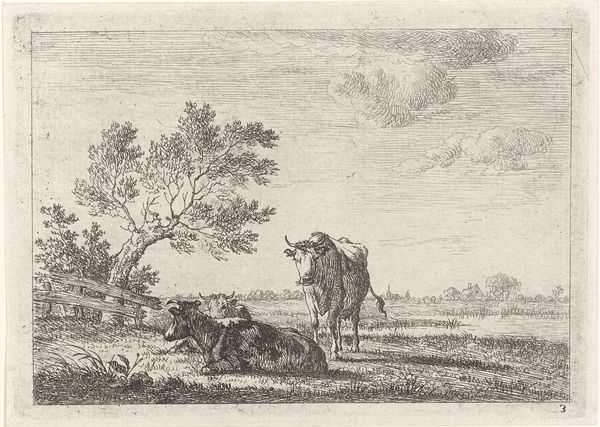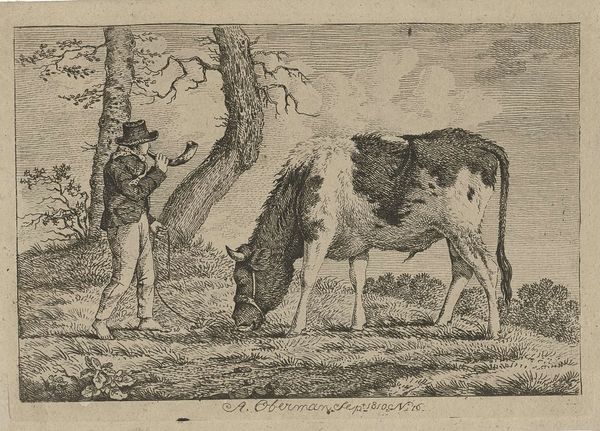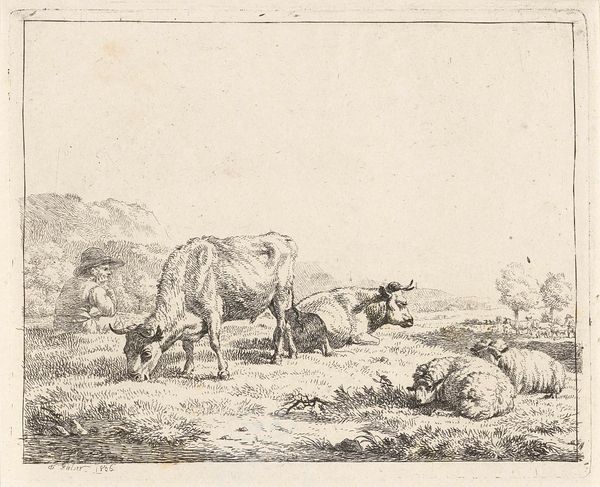
drawing, print, etching, engraving
#
drawing
#
light pencil work
#
baroque
# print
#
pen sketch
#
etching
#
pencil sketch
#
old engraving style
#
landscape
#
personal sketchbook
#
sketchwork
#
pen-ink sketch
#
pen work
#
sketchbook drawing
#
genre-painting
#
sketchbook art
#
engraving
Dimensions: height 106 mm, width 119 mm
Copyright: Rijks Museum: Open Domain
Editor: We are looking at "Three Cows by a River" by Jan Peeter Verdussen, made sometime between 1710 and 1763. It's an etching, small, almost like a fleeting glimpse from a sketchbook. The landscape is minimal, but those cows, they have so much character. What do you make of this little scene? Curator: Oh, isn't it charming? It feels so intimate, like stumbling upon a quiet moment in the countryside. Verdussen clearly has a keen eye for capturing the essence of these bovine figures. It's not just about representation; it’s about capturing their weight, their texture, their placid demeanor. But look at the trees—don’t you feel like they are drawn with the same personality? It makes you wonder about his walks...did he have a favourite spot to just sit and draw? Editor: Definitely! And there’s something about the lightness of the etching that suggests a quick study. Was this typical for landscape art of the Baroque period? Curator: Good question! While grand, sweeping landscapes were certainly in vogue, there was also this burgeoning interest in the everyday. Think of it as the artistic equivalent of a casual stroll versus a royal procession. These smaller works offered a sense of immediacy and personal connection, appealing to a different kind of collector, perhaps someone seeking solace in the simple beauty of nature, a respite from the elaborate courtly life. Perhaps they felt a deep comfort seeing that Verduussen sees the same. Editor: That makes perfect sense. It’s easy to imagine someone pausing, captivated by the gentle scene, as I am now! Thanks so much. Curator: My pleasure. It's these quiet, unassuming works that often speak the loudest to the soul.
Comments
No comments
Be the first to comment and join the conversation on the ultimate creative platform.
